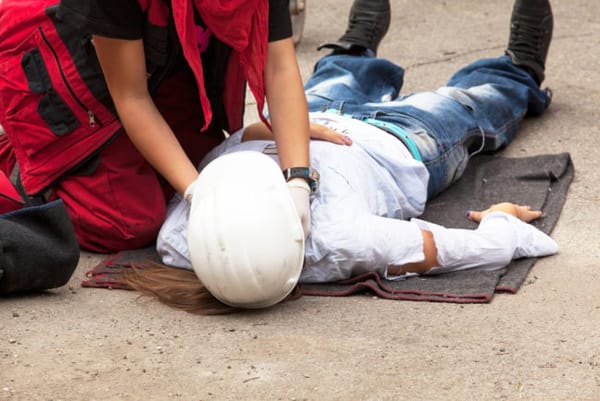How to respond to a notifiable incident – 3 important steps
By Michael Selinger
[Ed Note: A safety incident has just occurred at your workplace. What happens next? This question is often asked by businesses which are in the unfortunate position of having to deal with and respond to a serious safety incident. It is important to be prepared now in case such an incident happens.
In today’s Health & Safety Bulletin, Michael Selinger will outline the important steps you must take immediately after a safety incident occurs, including securing the worksite and notifying the health and safety regulator of a notifiable incident.]
What is a notifiable incident?
A notifiable incident is one involving a serious injury, illness or death of a worker, or a dangerous incident (also called a near miss).
A person has suffered a serious injury or illness if they require:
- immediate treatment as an inpatient in a hospital;
- medical treatment within 48 hours of exposure to a substance; or
- immediate treatment for:
- the amputation of any body part;
- a serious head, eye or burn injury;
- the separation of skin from an underlying tissue (such as degloving or scalping);
- a spinal injury; or
- a serious laceration.
A dangerous incident includes:
- uncontrolled spillage or leakage of a hazardous substance;
- an implosion, explosion or fire;
- an electric shock;
- any plant, substance or thing falling from a height;
- the collapse, overturning, failure or malfunction of any plant that must be authorised for use;
- the collapse or partial collapse of a structure or excavation;
- the inrush of water, mud or gas in an underground tunnel or excavation; or
- the interruption of the main system of ventilation in an underground tunnel or excavation.
3 important steps to take in response to a workplace incident
- Once an incident occurs at your workplace, you need to take all reasonable steps to attend to any injured workers, secure the worksite and report the incident to your health and safety regulator. The first critical step after an incident has occurred is usually to attend to the medical needs of anyone who has been injured. In most cases, first aiders will be able to determine if a worker’s injury is severe enough to require external medical attention. It’s important to remember that even if a worker claims to be fine and able to continue working, it is best not to rely on the worker’s personal assessment. First aiders are trained to assess the mobility of injured workers and can give the employer a fair idea as to the seriousness of the worker’s condition.
- Sometimes before attending to the injured worker it may be necessary to secure the worksite in order to avoid further risks of injury, including to the injured worker. For example, if the worker is trapped under a structure and it is not clear whether the structure will collapse, securing it might take precedence over attending to the immediate health needs of the worker. This might not always be practicable. For example, it might not be possible to access the injured worker until the area is made safe, e.g. if there has been a chemical release into the environment. You should also be aware that in some cases, moving the structure could cause further harm to the injured person.
- After taking care of any injured worker’s needs and securing the worksite, you may need to provide appropriate care and possibly counselling for other workers who might have been affected by the incident. You must notify the safety regulator immediately by telephone and, if requested, also in writing within 48 hours of the incident. If you are not sure whether the incident is a ‘notifiable incident’, still notify the regulator. The safety regulator will decide whether to send an inspector to an incident site within about one hour of being notified of the incident, and inspectors generally visit the workplace within an hour after that.
Next week I’ll explain the powers of health and safety inspectors once they are onsite, including the power to issue improvement or prohibition notices which must be complied with.
From the experts behind the Health & Safety Handbook, the Bulletin brings you the latest work health and safety news, legal updates, case law and practical advice straight to your inbox every week.

